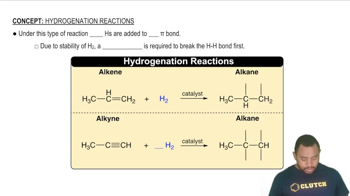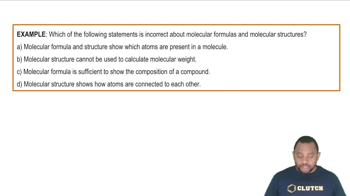Here are the essential concepts you must grasp in order to answer the question correctly.
Intermolecular Forces
Intermolecular forces are the attractive forces between molecules that influence physical properties like boiling points. The main types include hydrogen bonding, dipole-dipole interactions, and London dispersion forces. Compounds with stronger intermolecular forces generally have higher boiling points due to the increased energy required to separate the molecules.
Recommended video:
Intermolecular vs Intramolecular Forces
Hydrogen Bonding
Hydrogen bonding is a specific type of strong dipole-dipole interaction that occurs when hydrogen is bonded to highly electronegative atoms like oxygen, nitrogen, or fluorine. In the context of the given compounds, CH3CH2OH (ethanol) exhibits hydrogen bonding, significantly raising its boiling point compared to compounds without this interaction.
Recommended video:
Molecular Weight and Structure
Molecular weight and structure also play a crucial role in determining boiling points. Generally, larger molecules with greater molecular weights have higher boiling points due to increased London dispersion forces. However, the presence of functional groups and their ability to engage in hydrogen bonding can override this trend, as seen in the comparison of CH3CH2Cl and CH3CH2OH.
Recommended video:
Structural Formula Example
 Verified step by step guidance
Verified step by step guidance

